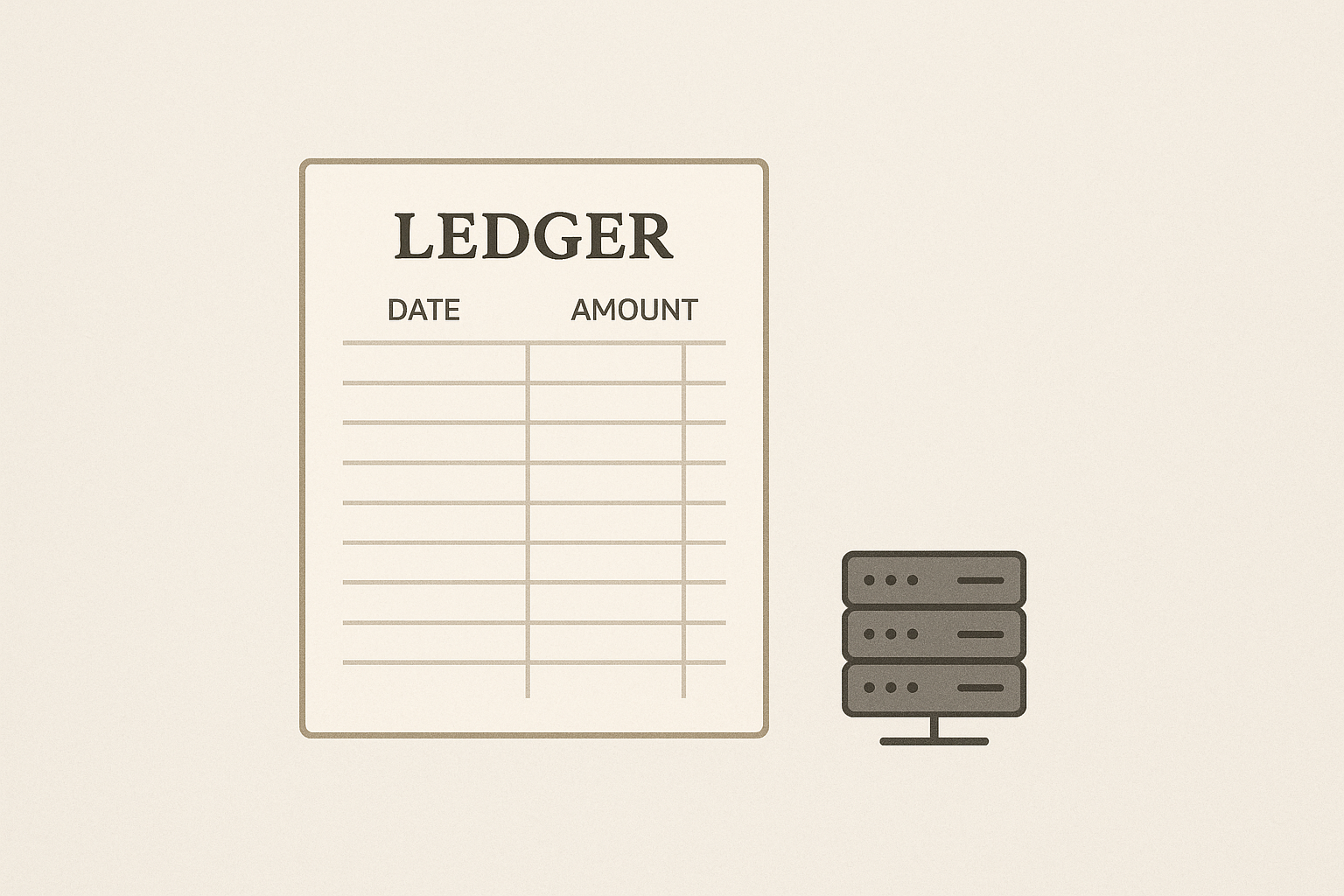Sustainable Data Lifecycle Management: Practical Frameworks to Shrink Storage Footprint and Cost
Design data lifecycles that reduce cost, carbon and operational risk with governance, automation and technical controls.

Defining the Evergreen Challenge
Organisations of every size collect increasing quantities of data. Log files, analytics events, backups, user uploads, machine-learning datasets and historic records accumulate without clear, enforceable lifecycle policies. Left unmanaged, data growth drives higher storage bills, longer backup windows, slower systems and larger carbon footprints. The problem is not temporary; it is structural. Good data lifecycle management converts uncontrolled growth into an asset: smaller bills, faster systems, lower energy use and clearer legal compliance.
This briefing sets out an evergreen framework for sustainable data lifecycle management. It is practical and technical, aimed at software engineers, platform teams, CTOs and founders. You will get two complementary, future-proof solutions with step-by-step implementation plans. Each solution includes code or configuration you can adapt to modern cloud platforms, and a business blueprint to measure ROI and operational risk.
Did You Know?
Data stored but rarely accessed commonly accounts for 70% or more of an organisation's total storage footprint. Reducing that footprint by targeted lifecycle policies is the most reliable way to cut cost and energy use.
The Stakes: Why Data Lifecycle Matters Over the Long Term
- Cost: Storage bills compound continuously; inefficient retention policies are predictable, recurring costs.
- Performance: Large indexes, backups and restore windows slow development and incident recovery.
- Carbon and energy: Data storage and processing consume electricity at scale; optimising storage reduces the overall footprint. See research on data-centre impacts for context at Nature.
- Compliance and risk: Undefined retention increases legal risk and the effort required for e-discovery or audits.
Principles That Remain True
- Define purpose for each dataset, map owners and apply retention by purpose.
- Automate enforcement, never rely on human memory or manual clean-up alone.
- Tier data by access pattern and business value; move cold data to cheaper, slower storage.
- Measure continuously: track volume per tier, access frequency and cost per GB-month.
Two Complementary, Evergreen Solutions
We present two strategies that work together. Solution A is governance-first, focusing on policy, ownership and automated lifecycle enforcement. Solution B is technical-first, emphasising storage tiering, deduplication and compression at ingest. Implement both for maximum benefit.
Solution A: Governance-First Data Minimalism and Automated Retention
Overview: Establish a data taxonomy, assign owners, set retention and retention exceptions, and automate deletion or archival with repeatable infrastructure as code. This solution reduces unnecessary retained data and creates auditable trails for compliance. It scales across cloud providers and on-prem systems because it is policy-driven.
Step-by-step implementation
- Inventory, classify and map datasets
- Run automated scans of storage buckets, databases, backup locations and data lakes to enumerate datasets, sizes and last-read times.
- Categorise datasets with a small set of retention categories, for example: ephemeral (7 days), short-term (90 days), medium-term (2 years), permanent (business archive).
- Assign an owner and a stated business purpose to each dataset; record in a central registry like a single-table database or lightweight data catalogue.
- Policy design
- For each category, define retention action: auto-delete, archive to cold storage, move to a governed dataset, or preserve under legal hold.
- Create exception processes for legal holds and research datasets, with automatic expiry unless renewed.
- Automation and enforcement
- Implement lifecycle rules as code. For object stores (S3-compatible) use lifecycle policies to transition or expire objects. For databases, implement TTL indexes or scheduled archive jobs.
- Build an orchestration service that reads the registry, reconciles actual state and applies lifecycle actions, recording every change in an append-only audit log for transparency.
- Safety and recovery
- Use soft-delete for the first 30 days in deletion workflows, if business risk requires it. Soft-delete can be an immutable archive with access controls.
- Maintain immutable, minimal metadata (index records) for deleted datasets to support future audits or e-discovery requests.
- Measurement and continuous improvement
- Track metrics weekly: total GB per retention category, cost per GB-month by tier, and number of active exceptions.
- Integrate cost metrics from your cloud provider or billing system into dashboards and alert on anomalies.
Implementation example, practical orchestration and lifecycle rule using Ghost-compatible HTML code. Below is a simple Node.js script that reconciles a CSV registry with S3 lifecycle actions. Adapt it to your cloud environment or on-prem object store.
<!-- Node.js: reconcile-registry.js -->
<pre>
const AWS = require('aws-sdk');
const fs = require('fs').promises;
// Configure AWS SDK via environment
const s3 = new AWS.S3();
async function loadRegistry(csvPath) {
const text = await fs.readFile(csvPath, 'utf8');
return text.split('\n').filter(Boolean).map(line => {
const [bucket,key,category,owner] = line.split(',');
return {bucket, key, category, owner};
});
}
function lifecycleRuleForCategory(category) {
// map categories to transitions
const map = {
'ephemeral': {ExpirationInDays: 7},
'short-term': {Transition: {Days: 90, StorageClass: 'STANDARD_IA'}},
'medium-term': {Transition: {Days: 30, StorageClass: 'ONEZONE_IA'}, ExpirationInDays: 730},
'permanent': null
};
return map[category] || null;
}
async function applyLifecycle(bucket, rules) {
if (!rules || rules.length === 0) return;
const params = {
Bucket: bucket,
LifecycleConfiguration: { Rules: rules }
};
await s3.putBucketLifecycleConfiguration(params).promise();
console.log('Applied lifecycle to', bucket);
}
(async function main() {
const registry = await loadRegistry(process.argv[2] || 'registry.csv');
const byBucket = {};
registry.forEach(r => {
const rule = lifecycleRuleForCategory(r.category);
if (!rule) return;
byBucket[r.bucket] = byBucket[r.bucket] || [];
byBucket[r.bucket].push({
ID: `${r.key}-${r.category}`,
Prefix: r.key,
Status: 'Enabled',
...rule
});
});
for (const bucket of Object.keys(byBucket)) {
await applyLifecycle(bucket, byBucket[bucket]);
}
})();
</pre>
Notes on the example: this script is intentionally small to illustrate the approach. A production system should include idempotency, error handling, reconciliation checks, robust audit logging, and security around credentials and cross-account operations.
Pro Tip: Include a mandatory business justification and owner field in the registry for every dataset before any retention action is taken. Policies enforced without owner context cause political pushback and operational errors.
Solution B: Technical-First Tiering, Deduplication and Compression at Ingest
Overview: Focus on reducing data volume through technical measures applied as close to ingestion as possible. This lowers costs and operational burden without waiting for policy changes. Key techniques are hot/warm/cold tiering, inline compression, deduplication, delta storage for backups and using immutable chunking for large datasets.
Step-by-step implementation
- Map access patterns
- Collect access telemetry: last access time, read frequency, request payload size, typical queries.
- Partition datasets by access heat into hot (minutes-hours), warm (hours-days) and cold (weeks-years).
- Implement storage tiering
- Use fast block or SSD-backed storage for hot datasets, cheaper object storage for warm, and long-term archival storage for cold.
- Automate transitions by rules that act on last-accessed metrics and size thresholds.
- Apply inline compression and columnar formats
- For event streams and analytics lakes, write data using columnar, compressed formats (Parquet, ORC) with sensible row-group sizes to balance read latency and compression efficiency.
- Compress user files where applicable, with transparent decompression on read. Use content-appropriate codecs, for example Brotli for JSON, zstd for general binary.
- Deduplicate and chunk large objects
- Use content-addressed chunking and object deduplication for backups and large user uploads. This reduces redundant storage across versions.
- Implement a content-hash index so identical chunks are stored once and referenced by multiple objects.
- Delta backup strategies
- Prefer incremental backups or snapshots with copy-on-write semantics to avoid storing redundant full copies.
- Ensure integrity by periodic synthetic full restores to validate backups.
Code example, a compact Python function that performs chunking and content-addressed storage for file uploads. This is an implementation pattern that reduces redundant bytes for versioned uploads and backups.
<!-- Python: chunk_and_store.py -->
<pre>
import hashlib
import os
CHUNK_SIZE = 4 * 1024 * 1024 # 4MB
STORAGE_DIR = '/var/objects'
os.makedirs(STORAGE_DIR, exist_ok=True)
def store_chunk(chunk_bytes):
h = hashlib.sha256(chunk_bytes).hexdigest()
path = os.path.join(STORAGE_DIR, h[:2], h)
os.makedirs(os.path.dirname(path), exist_ok=True)
if not os.path.exists(path):
with open(path, 'wb') as f:
f.write(chunk_bytes)
return h
def chunk_and_store(file_path):
chunks = []
with open(file_path, 'rb') as f:
while True:
b = f.read(CHUNK_SIZE)
if not b:
break
chunks.append(store_chunk(b))
# manifest references chunk hashes in order
manifest = '\n'.join(chunks)
return manifest
if __name__ == '__main__':
import sys
manifest = chunk_and_store(sys.argv[1])
print('Manifest:', manifest)
</pre>
In production, the storage backend would be distributed or object storage, with deduplicated chunks stored once and manifest metadata stored in a fast key-value store. Combine this with a garbage collection process that removes unreferenced chunks on a schedule.
Q&A: Will deduplication cost more CPU and slow writes? Yes, there is a trade-off. Deduplication uses CPU and metadata storage. Measure the break-even point: when the storage savings outweigh the compute cost. For large archives and multi-versioned backups, deduplication usually pays back quickly.
Business Models and ROI That Endure
Reducing data footprint produces both direct and indirect returns. Direct savings appear in storage and egress costs; indirect returns come from faster restores, reduced engineer time, smaller backup windows and lower carbon reporting liabilities. Here is a compact ROI blueprint you can apply repeatedly.
Simple 3-line ROI calculation
- Monthly Savings = (Current GB in target scope - Projected GB after intervention) * Cost per GB-month
- One-time Implementation Cost = Engineering hours * Fully loaded rate + tooling costs
- Months to Payback = One-time Implementation Cost / Monthly Savings
Example: If you reduce a 100 TB warm dataset by 40% through compression and lifecycle rules, and your cost is £0.02/GB-month, monthly saving = 40,000 GB * £0.02 = £800; if implementation cost is £8,000, payback = 10 months. Use your internal rates and include carbon or sustainability KPIs for broader stakeholder buy-in.
Operational Checklist and Governance Items
- Data registry and owners in place, with mandatory retention categories.
- Automated lifecycle enforcement for object stores and TTLs for databases.
- Inline compression for analytics data and content-aware compression for files.
- Deduplication for backups and versioned storage; manifest and garbage collection in place.
- Regular measurement, dashboards and alerts for growth anomalies.
- Legal hold mechanism integrated with registry and automated expiry.
Warning: Do not delete data without a recorded owner and business justification. Automation is powerful and dangerous; a single misapplied lifecycle rule can destroy business-critical records. Always keep an auditable trail and reversible safety window where appropriate.
Integration with Carbon-Aware Practices
Data lifecycle management reduces carbon by lowering the bytes stored and processed. Combine the technical approaches here with deployment strategies from related work on energy-aware systems. For an operational perspective on carbon-aware software design and steady-state optimisation, see the practitioner guide "Carbon-Aware Software: Building Energy-Efficient Cloud Systems for the Long Term" at Carbon-Aware Software: Building Energy-Efficient Cloud Systems for the Long Term.
Implementation Roadmap for a 90-Day Sprint
- Week 1-2: Inventory and classification. Run automated scans, publish the registry, assign owners.
- Week 3-4: Pilot lifecycle automation for a non-critical bucket or dataset. Implement soft-delete safety and audit logs.
- Week 5-6: Implement compression and columnar formats for one analytics pipeline. Measure compression ratio and read latency impact.
- Week 7-8: Deploy deduplication prototype for backups or file uploads, validate restore and GC behaviour.
- Week 9-12: Roll out policies to priority buckets, automate enforcement across accounts, update dashboards and billing alerts.
Measuring Success: Key Metrics to Track
- GB per retention category and trend line.
- Monthly storage cost by tier, and total cost variance vs baseline.
- Compression ratio per dataset type, deduplication ratio for backups.
- Mean time to restore for backup targets, and success rate of synthetic restores.
- Number of active exceptions and average exception duration.
Evergreen Governance Templates
Use these short templates as a starting point. They should be short, enforceable and reviewed annually.
- Retention policy template: category, business purpose, owner, retention action, exception process, last reviewed.
- Lifecycle rule template: source, prefix, transition schedule, expiry, verification test.
- Backup policy template: backup frequency, retention policy, deduplication settings, restore test schedule.
Evening Actionables
- Run an automated storage scan this week and produce a simple CSV with bucket, prefix/key, size, last-modified and owner; feed it to a small reconciliation script similar to the Node.js example.
- Pick one analytics pipeline and convert storage to a columnar compressed format such as Parquet; measure compression ratio and query latency before and after.
- Create a pilot lifecycle policy for a non-critical object store with soft-delete and an audit log; schedule a synthetic restore test in 30 days.
- Store the registry in a single source of truth and require a business justification before any dataset can be marked as "permanent".
- Set up a dashboard that reports GB and cost by retention category weekly; include a simple ROI calculator for proposed changes.
These actions are designed to be repeated annually. As datasets and business needs evolve, the governance-first and technical-first approaches remain valid. They scale from startups to large enterprises because they are principle-driven, auditable and automatable.
Minimal, sustainable data lifecycles are not a one-off project. They are an operational discipline that pays back in lower costs, faster systems, reduced carbon and clearer legal posture. Start small, measure carefully, automate with safety nets and iterate.





Comments ()